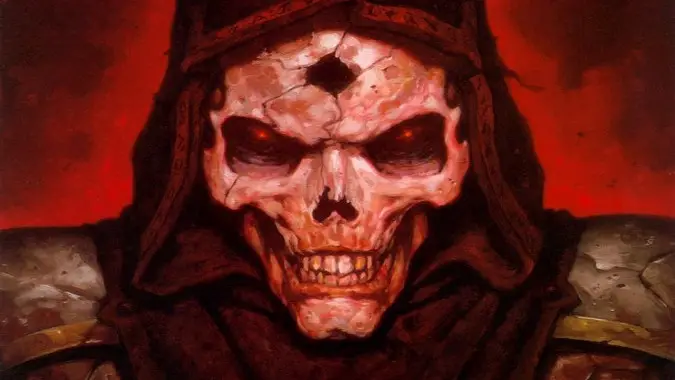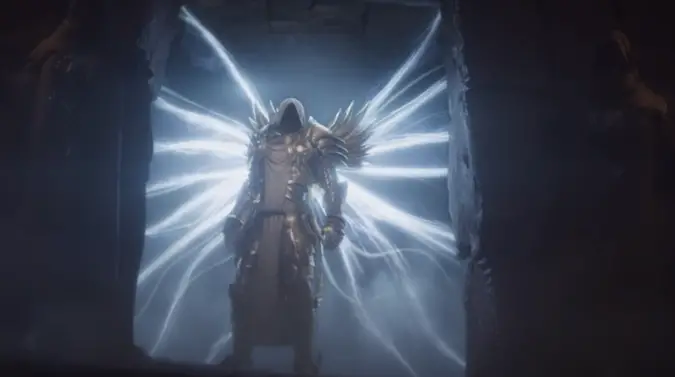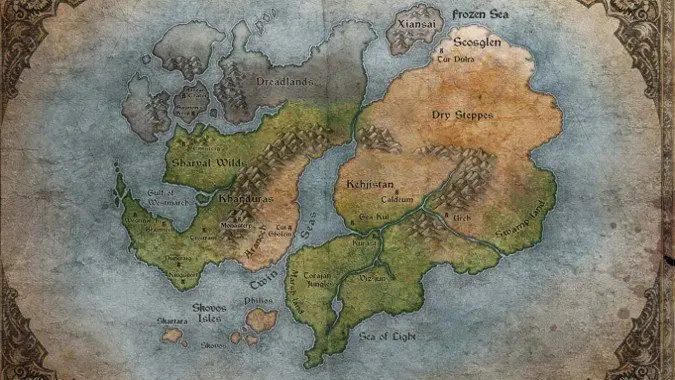Yes, they’re related to one another, but Diablo 2 is very different from Diablo 3

If your first Diablo game was Diablo 3 — and considering that Diablo 2 originally came out in 2000, that’s entirely possible — you may have felt somewhat confused when you first logged into Diablo 2: Resurrected. Town Portal is a consumable scroll? So is Identify? You can socket skulls into your gear? What is even happening?
Yes, the two games are significantly different, but those differences won’t prevent you from playing Diablo 2: Resurrected at all. You just need to accept that the games are not the same.

Similarities and differences between Diablo 2 and Diablo 3
Both games are part of the same series — D3 is the sequel to D2, after all. There are certain elements that repeat between games. The Barbarian and Necromancer classes are in both games, the world is the same place, just at different points in time — Diablo 2 is two decades before Diablo 3. Locations like Tristram and Kehjistan and the Barbarian lands are seen more than once in the series, although often changed by the passage of time.
Indeed, one of the biggest differences between Diablo 2 and Diablo 3 is the fact that Diablo 3 is entirely contingent on the events of the prior game and its expansion pack, Lord of Destruction. As I mentioned earlier, D3 is over 20 years later. In the time that passed between the two games, the survivors of Tristram to have built a new town away from the ruins of the original township. That 20 years was also enough time for the government of Kehjistan to move to Kaldeum after the revelation of the corruption of the Zakarum faith and the loss of Kurast. Twenty years later, and the trip to the remains of Arreat — the Arreat Crater — is literally a journey into the aftermath of Baal and Tyrael’s actions at the end of Lord of Destruction.
So if your touchstone is Diablo 3, a major difference you’ll notice when you play Diablo 2: Resurrected is that the story of Diablo 2 — which informs a lot of your frame of reference when Diablo 3 opens — has not happened yet.

Gameplay variations between Diablo 2 and Diablo 3
Many elements of Diablo 3 were designed in reaction to Diablo 2‘s systems. For example, rather than use a bunch of scrolls that you’ll eventually need to store in a tome, the ability to simply Town Portal, or the ease of Identifying items in Diablo 3 instead of using scrolls for that, is a reaction to the way it worked in Diablo 2. The more streamlined talent system in D3 is aimed at speeding up character choices, reduces systems that don’t add choices, and makes respecialization much, much easier. The pace of resource generation systems like Crusader’s Wrath, Barbarian’s Fury, or the Demon Hunter’s dual resource system of Hatred and Discipline is much greater than that in Diablo 2, because that’s the deliberate choice of the design.
Likewise, the difficulty levels of Diablo 3 are far more extensive, and the game’s Paragon system extends gameplay options well past Diablo 2, which has only three difficulty levels and 99 levels, not the Paragon system’s nearly limitless ability to gain power while playing. Gear systems in Diablo 3 are far more elaborate, with Legendary, Artifact and Primal Artifact levels of itemization that do not exist in the Diablo 2 design. D2 has a very different talent system with many choices that add power in incremental ways. It has an even more limited inventory system, although D2R does have a shared stash, an innovation first seen in D3.
Aside from Barbarians and Necromancers, the classes in Diablo 2 are also different from Diablo 3. The Paladin is similar to but not the same as the Crusader. The Assassin and Monk share themes but are also quite distinct. The Wizard from D3 has elements from the Sorceress but also significant differences. The Witch Doctor and Demon Hunter are disparate from anything in Diablo 2 and there’s no Druid to be found in the D3 gameplay. And even the Barbarian and Necromancer play very differently in D2 than D3.
In the end, there are of course aspects of the series that are shared between the two games, as they are both Diablo games. But Diablo 2 invents many of the tropes and systems that Diablo 3 reacts to, so it is unavoidable that there would be differences — and hopefully, improvements.
Please consider supporting our Patreon!
Join the Discussion
Blizzard Watch is a safe space for all readers. By leaving comments on this site you agree to follow our commenting and community guidelines.
 @MatthewWRossi
@MatthewWRossi



